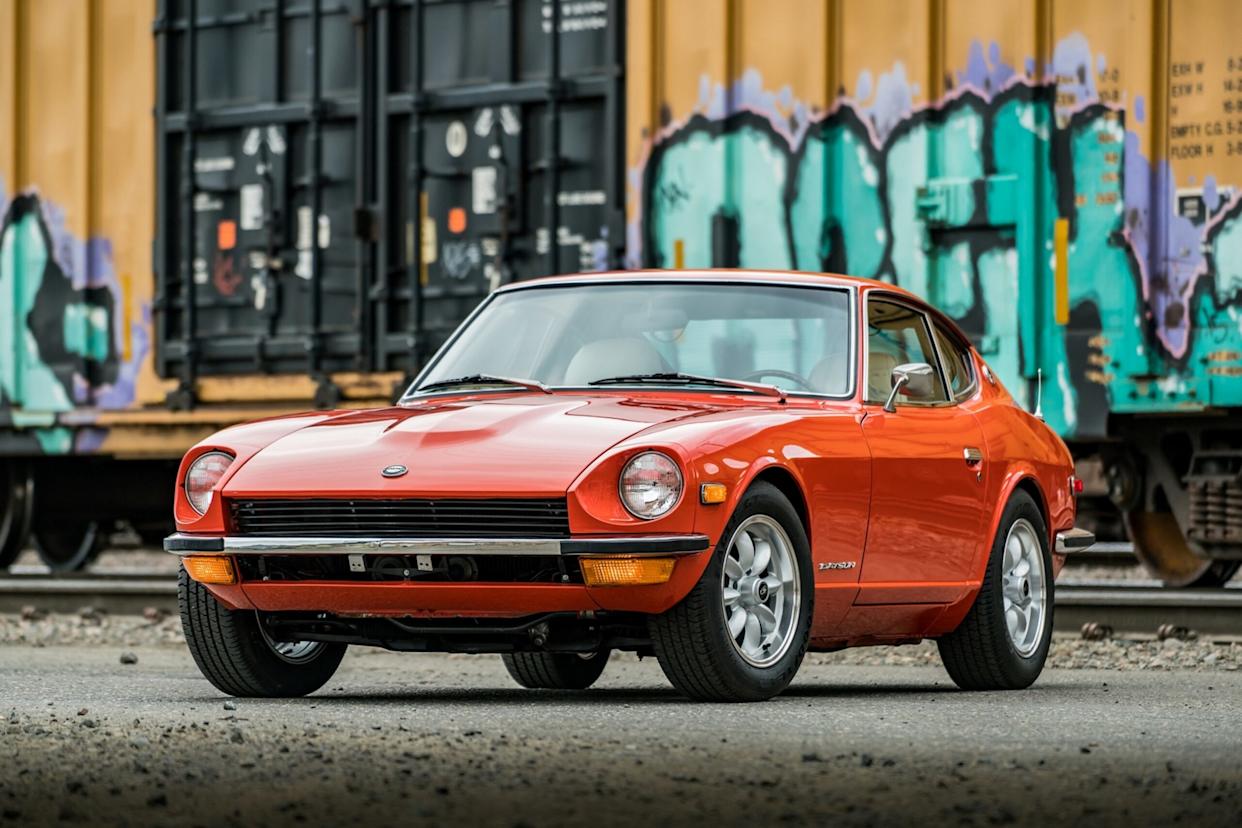
Don’t call it a comeback... these cars never stopped being great. For a long stretch, though, they weren’t getting the love they deserved.
Time has a way of rewriting the narrative. Nostalgia sets in. Pop culture reboots old icons. And suddenly, the very vehicles that once seemed ordinary are pulling big numbers at auction and turning heads at car shows.
While many of us always saw their value, a lot of these rides went through a phase where they were passed over in favor of flashier projects or newer daily drivers. You could find them under tarps on backroads, gathering dust in a relative’s garage, or parked with a For Sale sign in front of a weathered barn. Haggle with the owner, toss the keys in your pocket, and just like that, you’re the proud new caretaker of a 240Z, a Monte Carlo, or a square-body Chevy.
These are the cars we often find ourselves saying, “I should’ve bought one back when…”
Today, the market has woken up. What used to be an affordable oddball or beat-up beater is now a sought-after classic. The world finally caught up to what some of us knew all along: these cars had something special from the start.
How We Chose These Comeback Kings
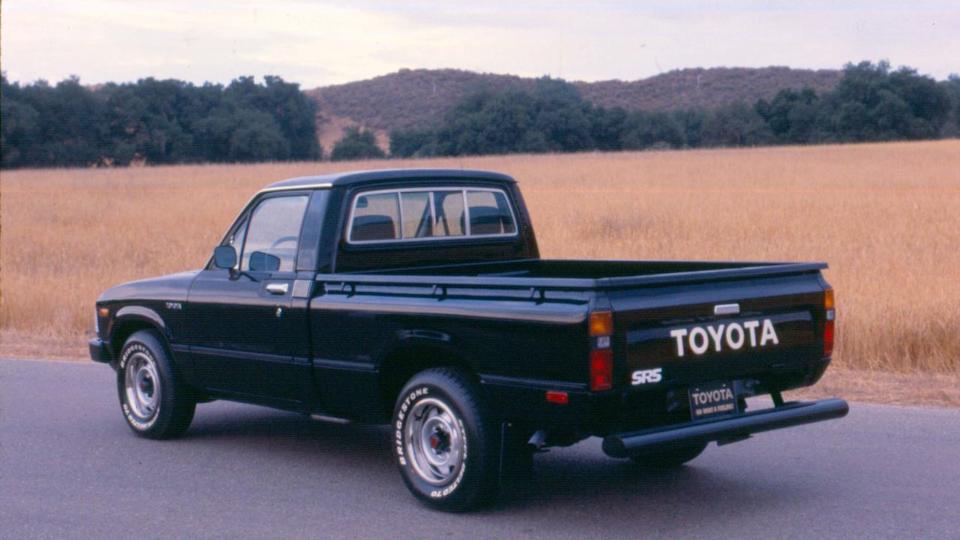
We focused on vehicles that spent much of their lives flying under the radar—models that followed the standard trajectory of depreciation and neglect, only to stage a surprise comeback. At one point, many of these were seen as disposable: old work trucks, budget coupes, grandpa’s chrome barge, or quirky oddballs with limited fanfare. But the market has a funny way of changing its mind.
Whether it's due to nostalgia, movie magic, or just a growing appreciation for things that once seemed ordinary, these rides have gone from forgotten to highly sought-after.
Now, let’s be clear—this isn’t an exhaustive list. Plenty of “unlikely classics” could fit these criteria. But this particular lineup was curated with a blend of personal admiration and a desire to showcase a wide range of styles, eras, and enthusiast tastes. Think of it less as a definitive ranking and more as a cross-section of the kinds of vehicles that prove value isn’t always obvious at first glance.
1990 Ford Bronco
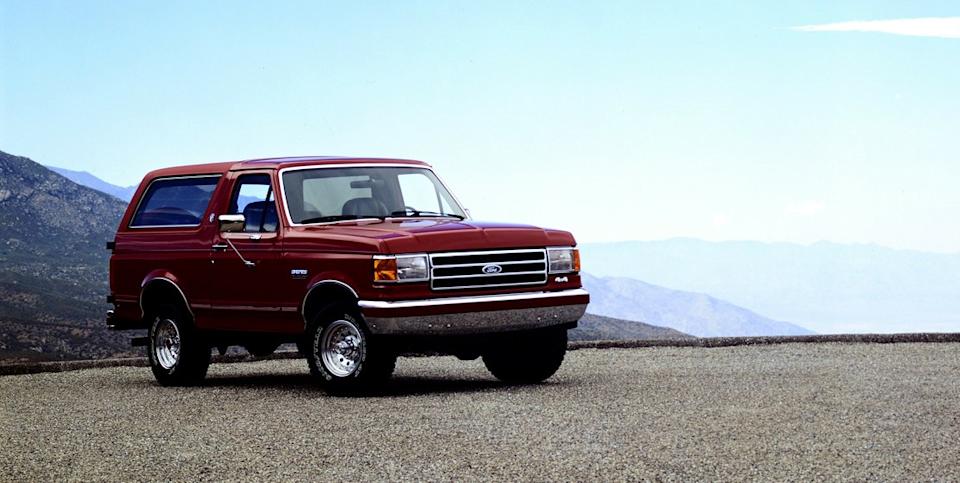
The Bronco name has always carried weight for Ford, right up there with the Mustang in terms of brand legacy. Classic first-generation Broncos from the '60s have long been blue-chip collectibles. But by the 1990s, the big, boxy fifth-gen Bronco wasn’t quite riding the same wave. Sales declined as consumer preferences shifted toward more family-friendly four-door SUVs like the Explorer. Ford pulled the plug in 1996.
Still, the '90s Bronco never fully faded. It's O.J. Simpson chase cameo burned the shape into pop culture memory, and its off-road capability kept it relevant among enthusiasts. Prices didn’t collapse entirely, but they softened for years, especially for well-used examples with rust, wear, or high miles.
Then, everything changed. Ford announced the Bronco’s long-awaited return, and suddenly collectors took a second look. Values for clean early-'90s models have steadily climbed over the past six years. You're not sending a kid to college by selling a dusty “ran when parked” barn find, but if you picked up a good-condition fifth-gen Bronco for cheap back in 2010? You’ve definitely earned some bragging rights.
Buick Grand National
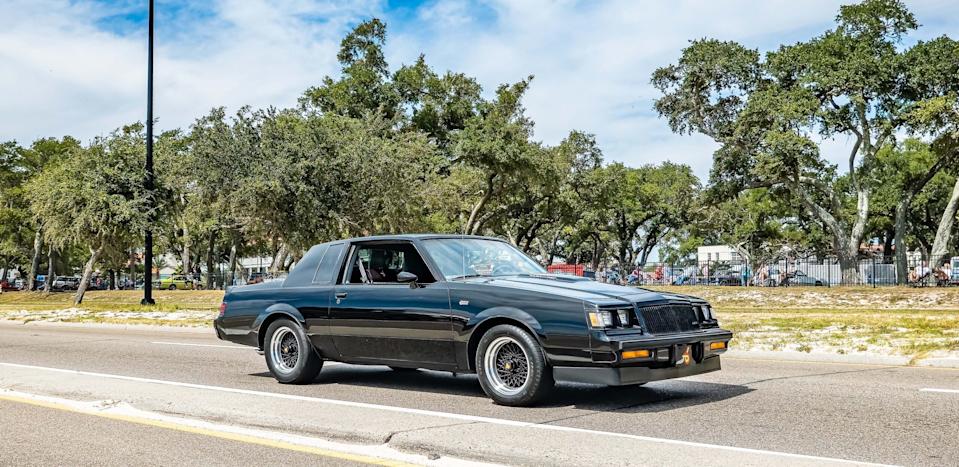
Let’s get this out of the way, I can already feel the emails coming. Yes, the Grand National has always had a cult following. Yes, it was fast. And yes, some folks never stopped appreciating it. Yet that doesn’t mean it wasn’t underappreciated by the broader market. Whether you think it’s underrated, overrated, or just never mainstream enough to begin with, there’s no denying it’s an outlier—a car that somehow exists in all of those categories at once.
In the 1980s, this car was hot, literally and figuratively. Zero to 60 in just over six seconds was serious performance back then. And at one point, you could pick up a clean example for around $15,000, which made it a total bargain compared to Italian sports cars with similar specs.
Over the years, prices have slowly crept up. Nearly a decade ago, Reddit threads were already noting mint examples selling for $30K. By 2020, the average sale price had jumped to over $40,000 according to ClassicCars.com and nearly $50,000 today. That said, the averages have been influenced by a few exceptional examples fetching eye-watering figures, so price growth hasn’t been a straight line. In fact, values in recent years have been relatively flat, at least compared to some other vintage collectibles.
All of which just reinforces the Grand National’s oddball status: loved deeply by those who get it, but still flying a little under the radar for the mainstream crowd. Then again, maybe that's part of its charm. All I know is, the time to buy one was ten years ago. Where’s a DeLorean when you need one? You'll see later...
1977 Pontiac Firebird Trans Am

The second-generation Trans Am hit the market at an unfortunate time. By 1977, emissions regulations had neutered most muscle cars, and the Trans Am's 400 cubic inch V8 was making a modest 180 horsepower — a far cry from the fire-breathing monsters of the late '60s. Critics dismissed it as all show and no go, with its flashy graphics package and "Screaming Chicken" hood decal seeming to compensate for lackluster performance.
Throughout the 1980s and '90s, these cars depreciated hard. Insurance companies labeled them high-risk due to their association with young, aggressive drivers. Many examples were thrashed, wrecked, or modified poorly. By the early 2000s, you could pick up a decent Trans Am for $8,000-12,000, making it accessible transportation for teenagers rather than a collector's piece.
The turning point came around 2007, coinciding with the 30th anniversary of Smokey and the Bandit. Suddenly, Burt Reynolds' black and gold Trans Am wasn't just a movie prop — it was a cultural icon. Values began climbing steadily, accelerating after Reynolds' death in 2018.
Today, clean examples with original Nocturne Blue or Starlight Black paint and intact Special Edition packages command $25,000-40,000, with exceptional survivors reaching six figures. The market finally recognized what enthusiasts always knew: the '77 Trans Am represented the last hurrah of an era, making it historically significant regardless of its horsepower numbers.
1984 Toyota Pickup (Hilux)
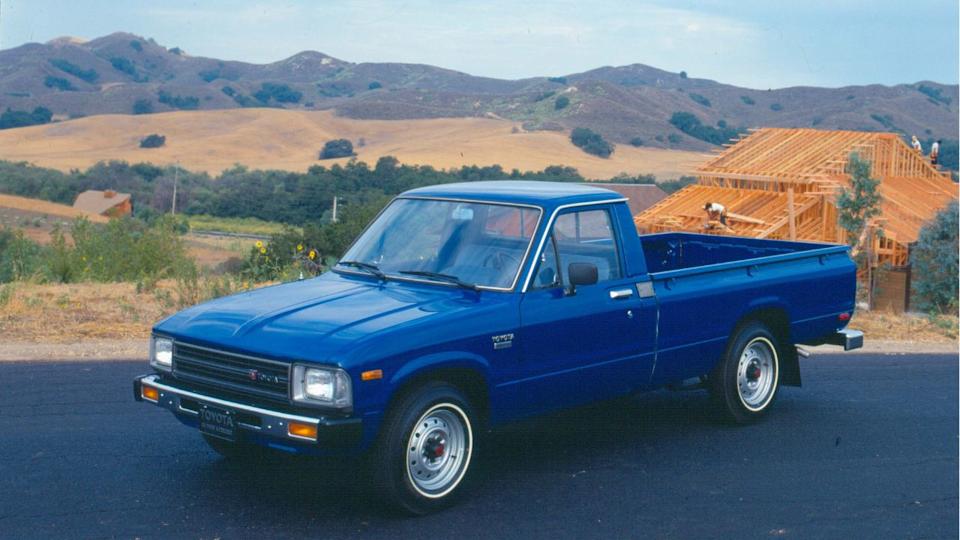
When Toyota's compact pickup arrived in America, it was purely utilitarian — basic transportation for contractors, farmers, and budget-conscious buyers who needed something reliable. These trucks were the automotive equivalent of work boots: functional, unpretentious, and designed to be used up and thrown away. With vinyl seats, manual everything, and styling that prioritized function over form, nobody considered them future classics.
Throughout the 1990s and early 2000s, most examples were driven hard, rusted out, or sent to salvage yards when repair costs exceeded their minimal blue book value. Clean examples could be found for $3,000-6,000, but even those usually showed hard use. The truck's reputation for indestructibility was well-established among those who owned them, but this actually worked against collectibility. Why preserve something that seemed virtually indestructible?
The transformation began slowly around 2010, driven by several converging factors. Back to the Future found new audiences through home video and streaming services, making Marty McFly's 1985 4x4 a screen icon. More importantly, the overlanding and off-road community discovered these trucks' legendary reliability and simplicity. As modern pickups grew larger, more complex, and more expensive, enthusiasts began appreciating the Toyota's honest functionality.
The collector market reached a boiling point around 2015. Clean examples without mods that once sold for pocket change now command up to $10,000, with low-mileage survivors sometimes reaching $30,000+. The irony is palpable: a truck originally valued for being disposable became valuable precisely because so few survived disposal. The Toyota pickup's resurrection proves that sometimes the most humble vehicles become the most cherished.
1973 Datsun 240Z
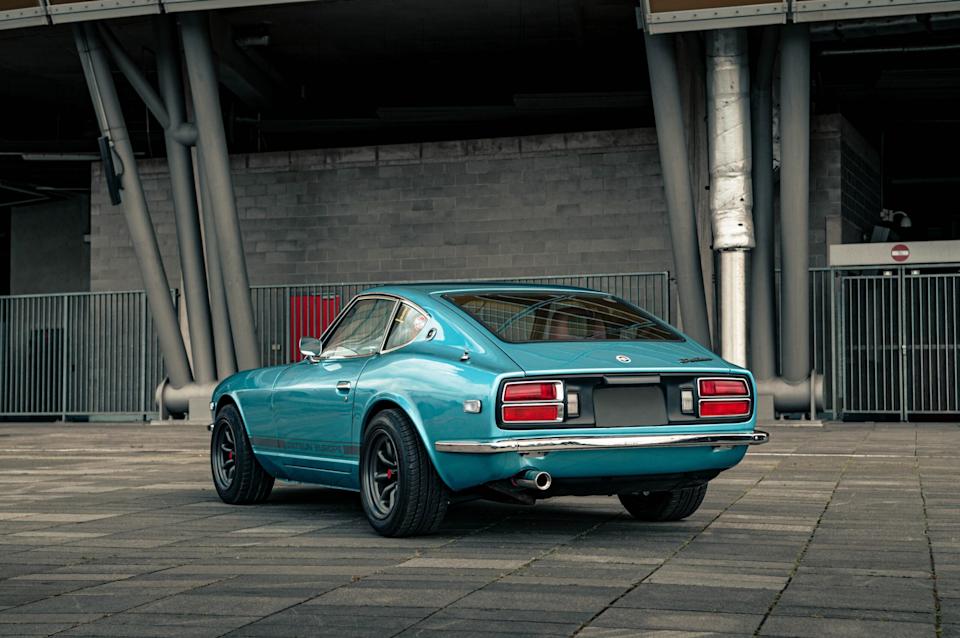
The 240Z was revolutionary when it debuted in 1970, offering European sports car performance at a fraction of the price. But by the late 1980s, the novelty had worn off, and reality set in. The car suffered from a notorious reputation for rust problems, particularly in the rear hatch area and rocker panels. Many examples had been modified poorly by owners seeking more power or different aesthetics, often destroying the car's balanced character in the process.
During the 1990s, decent 240Zs could be found for $4,000-8,000, often with rust issues that made restoration seem economically unfeasible. The car's Japanese origins also worked against it in an era when "import" was still considered a dirty word among many American enthusiasts. Younger buyers gravitated toward newer sports cars like the RX-7 or imported Supras, while older collectors stuck with traditional American muscle or European classics. Many Zs were parted out or abandoned in backyards.
The revival began in the early 2000s, driven by a perfect storm of cultural shifts. The growing appreciation for Japanese design aesthetics, fueled by anime culture and JDM (Japanese Domestic Market) enthusiasm, repositioned the Z as a design icon rather than just a budget sports car. Younger collectors, unburdened by Detroit loyalty, recognized the car's pure lines and perfect proportions. The Fast and Furious franchise further elevated Japanese car culture in popular consciousness.
Values began climbing around 2008, then accelerated dramatically after 2012. Clean 240Zs now start at $25,000, with matching-numbers examples reaching $40,000-60,000 (sometimes more). Pristine, unrestored survivors have broken six figures at auction. The transformation is complete: what once seemed like a cheap alternative to "real" sports cars is now recognized as one of the most influential automotive designs of the 1970s, with museum-quality examples treated as rolling art.
1981 DeLorean DMC-12
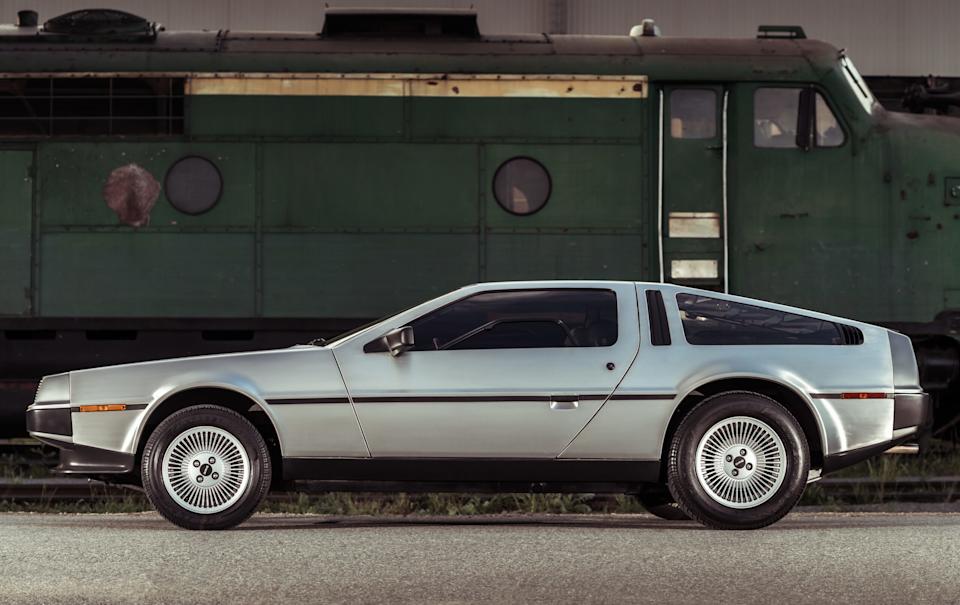
Like the Buick Grand National, this one might stir up debate. The DeLorean DMC-12 has always been iconic, instantly recognizable, and inseparable from pop culture thanks to Back to the Future. While it may have gone through a quiet phase, it never truly sank to bargain-bin status.
That said, there was a time, especially in the late 1980s and early 1990s, when a few owners let them go for a song. Prices dropped to around half of the original $25,000 MSRP, and the cars carried a reputation for being more style than substance. Build quality was inconsistent, the PRV V6 engine was underwhelming, and most mechanics didn’t want to touch them.
Despite all that, the car's presence endured. The gull-wing doors, stainless steel body panels, and sci-fi silhouette made it unforgettable. Thanks to VCRs and video rental stores, Back to the Future remained a household staple long after its theatrical run. Even people who missed the original release grew up seeing a DeLorean time machine parked on screen, embedding the car into pop culture consciousness for decades.
Nostalgia for the 1980s hit full force in the mid-2000s, and interest in the DeLorean began to rise. With only around 9,000 ever built and many lost to time, even average-condition examples began commanding real money.
DeLoreans were never exactly cheap, especially given their movie-star reputation. However, they remained surprisingly attainable for those with a little patience, mechanical know-how, and wise timing. Today, those early believers are reaping the rewards. Driver-quality cars regularly sell for $40,000 to $60,000, while pristine low-mileage examples can exceed $80,000.
One key factor in the car's comeback is the ongoing support from DMC (DeLorean Motor Company). The company still exists and offers parts, repairs, and full restorations, making ownership far more practical than it used to be.
Jeep Cherokee XJ
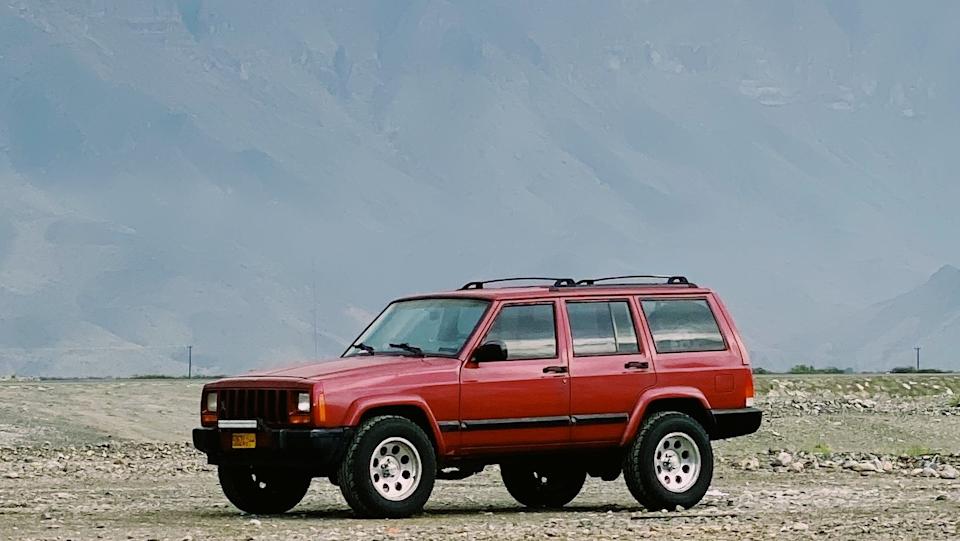
When Jeep introduced the Cherokee XJ in 1984, it shook up the SUV market with its unibody construction, a significant departure from the traditional body-on-frame layout. Though it still used solid axles front and rear, the XJ delivered better fuel economy and a lighter, more compact footprint than its full-size rivals, making it a standout for off-road performance and everyday practicality. It quickly earned a reputation as a go-anywhere vehicle with genuine 4x4 credentials.
By the 1990s, however, the Cherokee had settled into a new role as a dependable family workhorse. Soccer moms used them for school runs, college students bought hand-me-downs for winter driving, and few people thought of them as future collectibles. They were tools, not treasures.
Throughout the 2000s, XJs hit their depreciation low. High-mileage models sold for $2,000–$4,000, and even clean, low-mileage Cherokees rarely exceeded $8,000. To most buyers, they were outdated and boxy, lacking the plush interiors, safety features, and on-road refinement of newer SUVs. Many were driven into the ground or handed down as beaters' first cars.
Values began climbing sharply after 2015. Clean, unchanged examples now sell for $8,000-15,000, with low-mileage survivors commanding over $44,000 in special circumstances. Two-door models and rare trim levels like the Limited bring even more. The Cherokee's journey from disposable family transport to sought-after classic proves that sometimes the most honest vehicles are the most enduring.
1970 Chevrolet El Camino SS
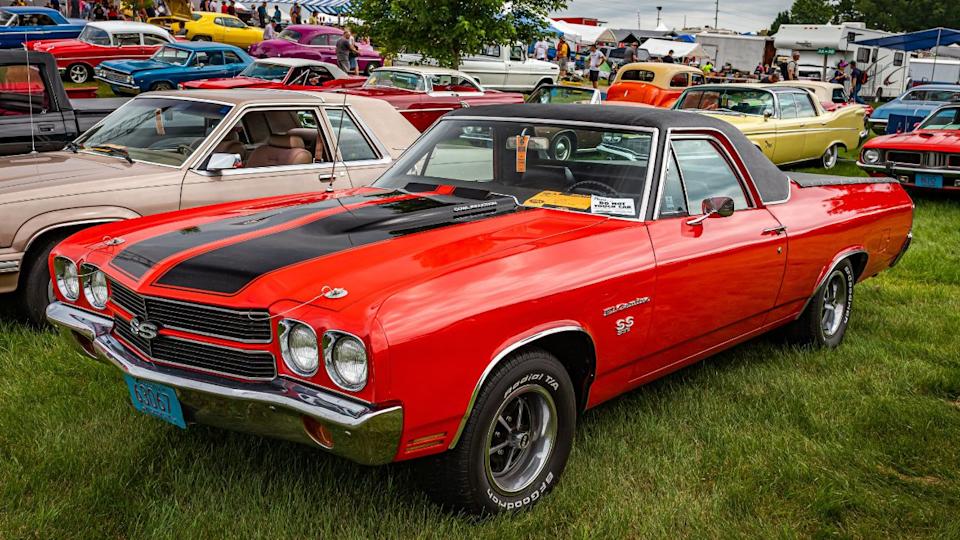
The El Camino occupied an awkward middle ground that nobody seemed to want during its heyday. Car guys thought it was a truck; truck guys thought it was a car. This identity crisis was reflected in its sales figures and cultural reception. The SS version had legitimate muscle car credentials with its 454 big block option, but the car-truck hybrid concept never gained mainstream acceptance. Most buyers chose either a proper muscle car like the Chevelle SS or a traditional pickup truck.
By the 1980s, most examples were being used as work vehicles, hauling lumber, landscaping supplies, or serving as shop trucks. This utilitarian duty accelerated depreciation and led to high rates of modification, rust, and general abuse. During the 1990s and early 2000s, El Caminos were cheap and unloved. Clean examples sold for $6,000-10,000, significantly less than comparable Chevelles or Camaros from the same era. Many were modified poorly with low-rider aesthetics or simply worn out from utility duty.
The market's confusion about how to categorize the El Camino worked against its collectibility. Muscle car collectors preferred "pure" cars, while truck enthusiasts saw it as a compromise. This left the El Camino in automotive limbo, appreciated by a small group of enthusiasts but largely ignored by the broader collector market.
The turning point came as muscle car prices soared beyond most enthusiasts' budgets around 2008. Buyers seeking big-block performance at reasonable prices began reconsidering the El Camino's merits. Its utility bed was reframed as a unique feature rather than a compromise, and its lower production numbers (compared to Chevelles) began working in its favor. The car's distinctive styling and practical versatility attracted buyers who wanted something different from typical muscle cars.
The transformation accelerated after 2012, driven by social media exposure and custom car culture. Clean SS models now reach $25,000-40,000, with rare combinations like the 1970 SS 454 LS6 reaching six figures. The El Camino's former weakness — its hybrid nature — became its strength in a market hungry for distinctive classics. What once seemed like automotive indecision now appears refreshingly honest: a vehicle that could haul your stuff and do it with impressive aggression.
1983 Volkswagen Rabbit GTI
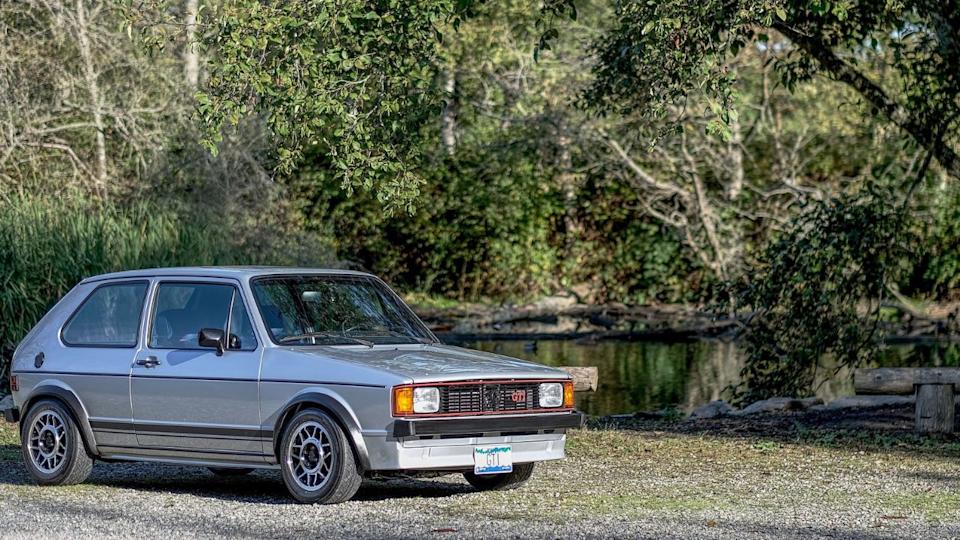
The original GTI created the hot hatch segment in America, but by the early 1990s, it was seen as a noisy, uncomfortable econobox with delusions of sportiness. The car's harsh ride, sparse interior, and agricultural diesel-like engine note made it seem crude compared to more refined competitors like the Acura Integra or more powerful alternatives like the Mustang 5.0. Most examples were driven hard by enthusiasts who couldn't afford "real" sports cars, leading to high rates of modification and abuse.
Throughout the 1990s and 2000s, clean GTIs were difficult to find and cheap to buy when you did locate one. Examples with original interiors and clean drivetrains sold for $3,000-6,000, but most had been modified, neglected, or both. The car's association with the tuner scene worked against collector interest — potential buyers assumed any surviving example had been "enhanced" beyond recognition with aftermarket parts of questionable quality.
The GTI's reputation as a maintenance nightmare didn't help its cause. The car's German engineering required more attention than most American buyers were prepared to provide, and repair costs often exceeded the vehicle's value. Many examples were abandoned when expensive repairs became necessary, further reducing the population of clean survivors.
The revival began around 2010, coinciding with the 25th anniversary of the GTI's American debut. Automotive journalists began writing retrospective articles about the car's influence on the hot hatch segment, repositioning it as a pioneer rather than a pretender. European car enthusiasts, inspired by the growing appreciation for BMW 2002s and early 911s, began seeking American-market GTIs as affordable alternatives to more expensive German classics.
The transformation accelerated as millennials with childhood memories of these cars entered their peak earning years. The GTI's association with youth culture and driving enthusiasm resonated with buyers seeking alternatives to sanitized modern performance cars. Clean, unmodified examples became genuinely rare, with most survivors showing evidence of modification or high mileage.
Today, collectible-quality early GTIs command $15,000-25,000 if enthusiasts are willing to pay, with rare combinations like the Tornado Red 1983 model reaching $30,000+. The market finally recognized what European enthusiasts always knew: the Rabbit GTI wasn't pretending to be a sports car —it was defining what a sports car could be in an era of increasing regulation and refinement.
1985 Chevrolet C/K Pickup

Square-body Chevys were a fixture of American roads in the 1980s. You saw them everywhere on farms, at job sites, and in small-town driveways. They were utilitarian to the core, lacking the sleek styling of earlier pickups or the capability and refinement of newer designs.
By the early 2000s, these trucks had depreciated to near-worthlessness. High-mileage examples sold for $2,000-4,000, and even clean trucks rarely exceeded $8,000. The market viewed them as outdated, uncomfortable, and crude compared to modern pickups with better fuel economy, more power, and contemporary amenities.
The comeback began around 2012, fueled by a mix of cultural nostalgia and shifting buyer priorities. The custom truck scene rediscovered the square body’s clean lines and modification potential. At the same time, younger enthusiasts priced out of both new trucks and pricier vintage classics began embracing the Chevy’s honest design, mechanical simplicity, and old-school charm.
Social media played a crucial role in the transformation. Instagram accounts dedicated to square-body builds showcased the trucks' potential for dramatic customization, while YouTube channels documented restoration projects that revealed hidden beauty beneath decades of work duty. The #squarebody hashtag became a rallying cry for enthusiasts celebrating the design's unpretentious functionality.
Values climbed steadily through the 2010s, then exploded after 2018. Clean examples now reach nearly $70,000 if they are collector quality with low mileage. Short-bed, four-wheel-drive models command premium prices, and even project trucks sell for more than complete examples did a decade ago. The square body's transformation from disposable work truck to sought-after classic proves that sometimes the most honest designs are the most enduring.
1979 Mazda RX-7
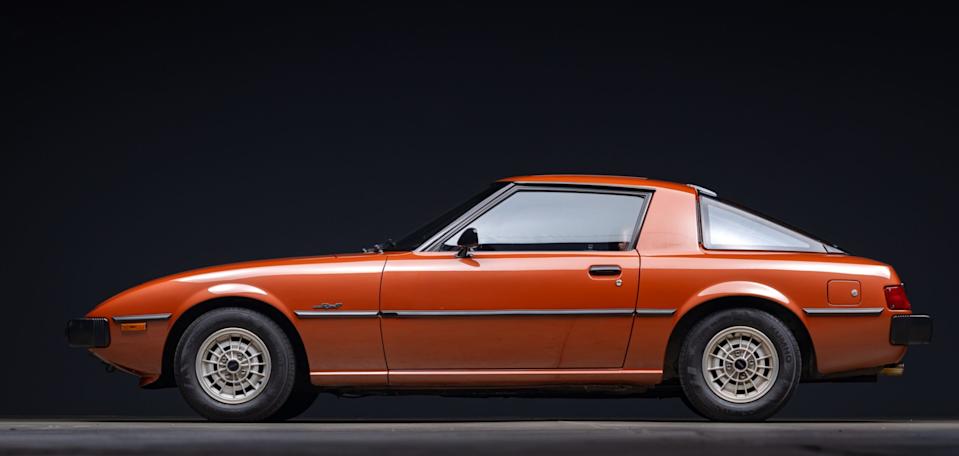
The first-generation RX-7 was revolutionary when it arrived, offering genuine sports car performance at economy car prices. But the rotary engine that made it special also made it problematic for most owners. The Wankel rotary required different maintenance procedures than conventional piston engines, and most mechanics — let alone owners — didn't understand these requirements. This led to premature engine failures, expensive rebuilds, and a reputation for unreliability that shadowed the car throughout its early years.
During the 1990s and early 2000s, clean RX-7s were cheap and readily available, but came with a significant caveat: most had blown engines or other serious mechanical issues. Examples with working rotaries sold for $4,000-8,000, but buyers had to budget for inevitable engine rebuilds that could cost more than the car was worth. The car's Japanese origins also worked against it during an era when American collectors strongly favored domestic muscle cars and viewed imports with suspicion.
The rotary engine's unique characteristics — high-revving nature, distinctive exhaust note, and need for frequent maintenance — were seen as liabilities rather than assets. Most buyers viewed the RX-7 as interesting but impractical, suitable only for dedicated enthusiasts willing to deal with its quirks. This perception kept values depressed even as the car's performance credentials became more widely recognized.
The transformation began around 2008, driven by growing appreciation for Japanese automotive culture and engineering. The drift scene embraced the RX-7's lightweight, rear-wheel-drive layout and perfect weight distribution, while anime and manga introduced American youth to JDM (Japanese Domestic Market) aesthetics. Younger collectors, unburdened by anti-import prejudices, recognized the car's pure design and unique character.
Crucially, the rotary engine's quirks became selling points rather than drawbacks. Enthusiasts began appreciating the engine's high-revving nature and distinctive sound, while its rarity (Mazda was the only manufacturer to mass-produce rotary engines) added exclusivity appeal. The engine's rebuild requirements were reframed as authentic enthusiast engagement rather than maintenance headaches, similar to how Italian exotic car owners view their vehicles' demanding nature.
Values increased after 2012, then accelerated dramatically as clean examples became genuinely scarce. Today, pristine RX-7s are worth $15,000-25,000, with unrestored survivors reaching $35,000+. The car's journey from problematic oddball to cherished classic demonstrates how perceived weaknesses can become strengths when viewed through the right cultural lens. The MX-5 Miata may be the popular one, but there's a reason it's worth just $5,000 while the RX-7 is skyrocketing.
1993 Land Rover Defender 90
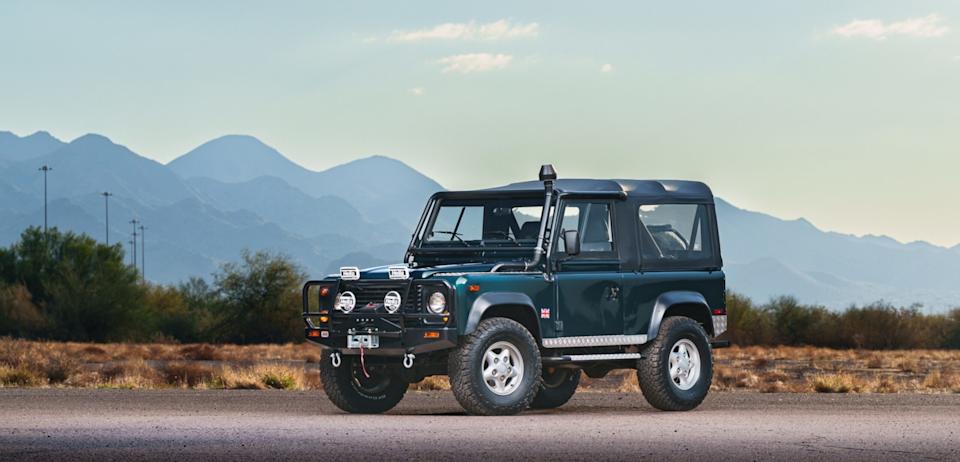
When Land Rover introduced the Defender to America in 1993, it was an anachronism — a crude, uncomfortable truck in an era of increasingly refined SUVs. The vehicle's agricultural origins showed in every detail: Spartan interior, harsh ride, poor fuel economy, and reliability issues that made ownership an adventure in the worst sense. The truck was expensive to buy and even more expensive to maintain, with a dealer network that was both sparse and notoriously unhelpful.
Most buyers who could afford the Defender's steep purchase price quickly moved on to more civilized alternatives like the Range Rover or Toyota Land Cruiser. Throughout the 1990s and early 2000s, Defenders depreciated rapidly due to high maintenance costs and poor dealer support. Used examples could be found for $15,000-25,000, but buyers had to budget for constant repairs and improvements just to keep them running reliably.
The truck's association with wealthy buyers who used them as expensive toys also created resentment among serious off-road enthusiasts. Many saw the Defender as a fashion statement rather than a serious tool, which hurt its credibility in off-road circles where capability mattered more than prestige. This perception kept values depressed and limited the market to a small group of dedicated enthusiasts.
The revival began around 2010, coinciding with the explosive growth of overlanding culture in America. Social media showcased the Defender's capabilities in extreme conditions, repositioning its crude nature as authentic functionality rather than poor refinement. The truck's military heritage and safari associations added adventure credibility that modern SUVs, no matter how capable, couldn't match.
The transformation accelerated when Land Rover announced the Defender's discontinuation in 2016. Suddenly, the truck's flaws became character traits, and its agricultural honesty seemed refreshing compared to modern automotive complexity. The final model year created artificial scarcity that drove prices higher, while established restoration shops and parts suppliers solved many of the ownership issues that once plagued these vehicles.
Today, clean Defender 90s have climbed to an average of $68,000, with low-mileage examples exceeding $80,000. The truck's journey from expensive problem to sought-after icon proves that sometimes authenticity trumps refinement, and that what seems like poor engineering can appear as uncompromising, purpose-built design when viewed through the right cultural lens.
1982 Cadillac Eldorado Biarritz
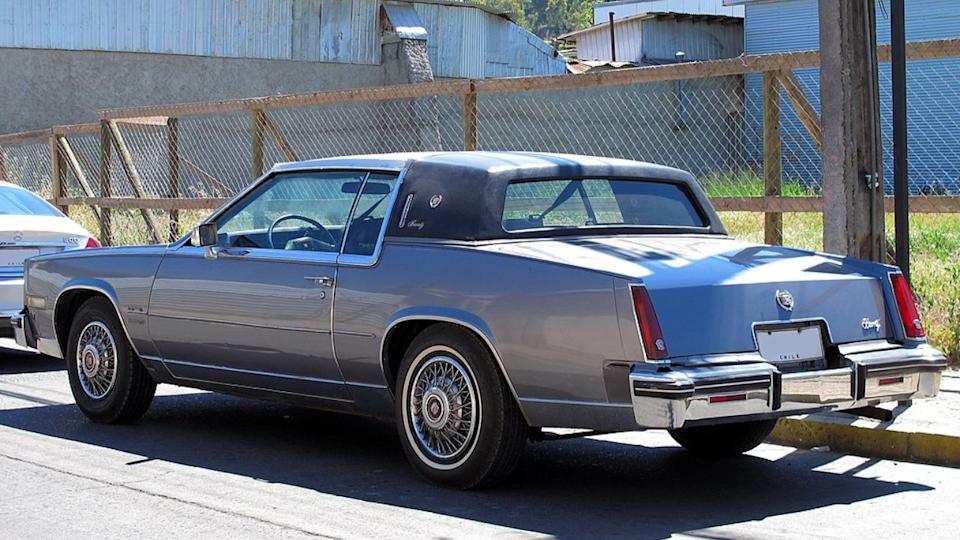
The early 1980s were dark times for Cadillac, as the brand struggled with downsizing mandates and fuel economy requirements that seemed to compromise everything that made Cadillacs special. The 1982 Eldorado Biarritz, with its stainless steel roof and tufted leather interior, represented peak malaise-era excess: all show and no go, powered by a weak V8 that barely managed to move the car's substantial bulk.
The Biarritz was the ultimate expression of early-'80s automotive confusion: a luxury car that felt neither luxurious nor well-engineered. Its build quality was questionable, its performance was anemic, and its styling seemed to apologize for existing. By the 1990s, these cars were seen as relics of poor taste and automotive decline, representing everything wrong with American car manufacturing during its lowest period.
The cars sat unsold on used car lots for months, associated with elderly owners and outdated luxury concepts. Most examples were driven sparingly and stored carefully, but low mileage couldn't overcome the stigma of representing Cadillac's worst era. Clean examples sold for $8,000-12,000, a fraction of their original $20,000+ sticker price, and even those prices seemed optimistic given the car's reputation.
The comeback began around 2015, driven by millennial nostalgia for 1980s excess and a growing appreciation for automotive camp. What previous generations saw as gaudy ostentation, younger buyers viewed as authentic period styling and unapologetic American luxury. The Biarritz's over-the-top features — from the stainless steel roof to the wire wheel covers — were reappreciated as honest expressions of automotive confidence during an uncertain era.
The transformation accelerated as collectors seeking distinctive alternatives to mainstream classics discovered these cars' rarity and condition. Most examples had been garage-kept by careful original owners, creating a supply of pristine survivors that had never been modified, abused, or used as daily transportation. The car's association with 1980s television shows and movies added pop culture credibility that younger collectors found irresistible.
Today, clean Biarritz models will set you back $18,000-28,000, with exceptional examples reaching $57,000+. The car's resurrection from automotive pariah to collectible classic proves that sometimes the most maligned designs become the most celebrated, given enough time and the right cultural context. What once seemed like automotive shame now appears as bold period styling that captured the spirit of its era.
1978 Chevrolet Monte Carlo

The downsized 1978 Monte Carlo represented everything frustrating about late-1970s Detroit: smaller engines, lighter construction, and compromised styling that seemed to apologize for existing. Compared to the muscular earlier generation, the new Monte Carlo seemed like automotive surrender — a personal luxury car with neither luxury nor performance to justify its existence. The car's formal styling and substantial size couldn't hide its fundamental lack of purpose in a changing market.
Throughout the 1980s and '90s, these cars were cheap and plentiful, driven primarily by elderly owners who appreciated the car's smooth ride and traditional American styling. But younger buyers saw them as boring boats, unsuitable for serious driving and lacking the performance credentials of true muscle cars. Clean examples sold for $4,000-8,000, with high-mileage cars available for even less. The Monte Carlo's association with an older demographic worked against any collector interest.
The car's reputation as a "grandpa car" was reinforced by its typical ownership pattern: garage-kept, low-mileage examples driven only to church and the grocery store. While this created a supply of well-preserved survivors, it also cemented the car's image as automotive irrelevance. Most enthusiasts dismissed the Monte Carlo as a symbol of Detroit's creative bankruptcy during the malaise era.
The revival began around 2010, as muscle car prices climbed beyond most enthusiasts' budgets and buyers began seeking affordable alternatives with V8 engines and rear-wheel drive. The Monte Carlo's substantial presence and formal styling were gradually reframed as elegant restraint rather than boring compromise. Custom car builders discovered the car's excellent proportions and solid platform, which provided an ideal foundation for updates and modifications.
The transformation accelerated as social media showcased dramatic Monte Carlo builds that revealed the car's hidden potential. The car's association with 1970s culture — from Cheech and Chong movies to lowrider culture — added credibility among younger demographics seeking alternatives to overpriced muscle cars. Its affordable starting price made extensive modifications economically feasible, creating a thriving custom car scene.
Values began climbing after 2015, with clean examples now commanding $12,000-18,000. Rare options like the SS package or desirable color combinations bring premium prices, while even basic models with good bones sell for more than complete cars did a decade ago. The Monte Carlo's journey from forgotten boat to appreciated classic demonstrates how changing perspectives can reveal hidden virtues in the most unlikely candidates, proving that automotive beauty is often in the eye of the beholder.
The Garage Gold You Never Saw Coming

As they say, one man's trash is another man's overpriced treasure. If there’s one thing this list proves, it’s that time has a funny way of turning yesterday’s junk into today’s jackpot. Whether it’s driven by nostalgia, rarity, or just a shift in taste, these cars have gone from being written off to being written into auction catalogs.
So before you sell off that old ride or dismiss someone else’s forgotten project, take a second look; you might be staring at the next big thing. Because in the world of vintage cars, value isn’t always about what’s under the hood, it’s about being in the right era at the right time. Some just needed to wait a few decades.
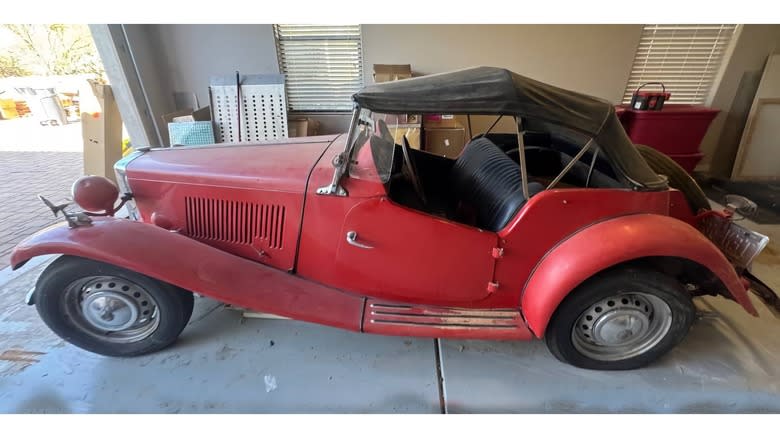
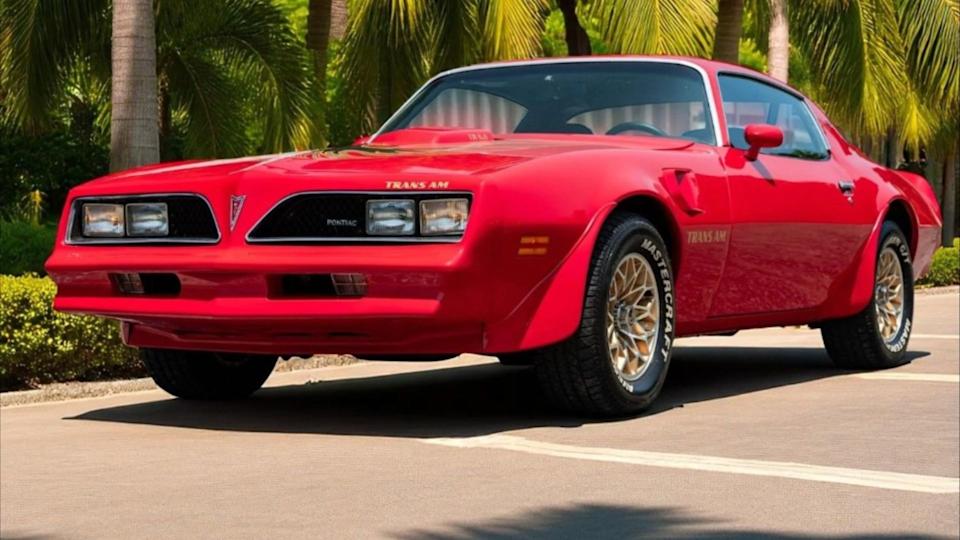
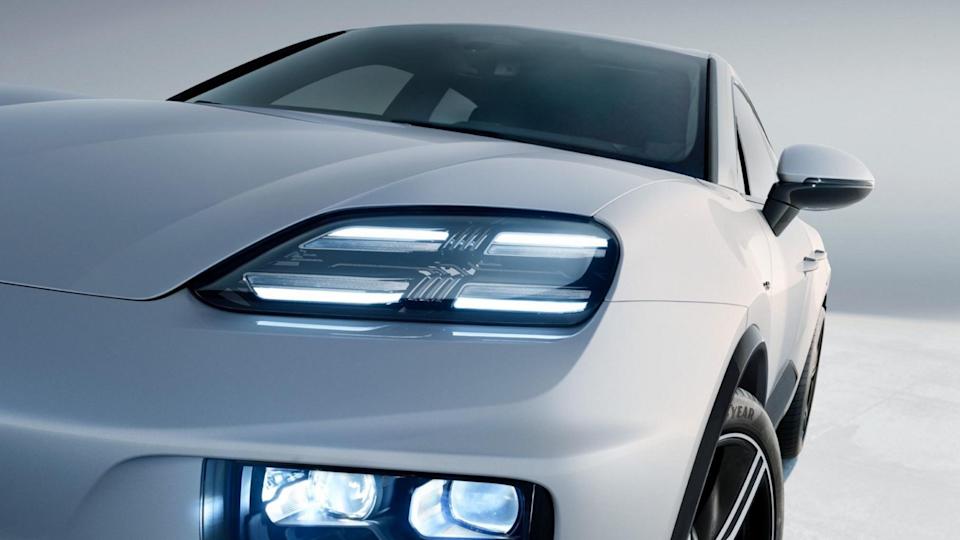




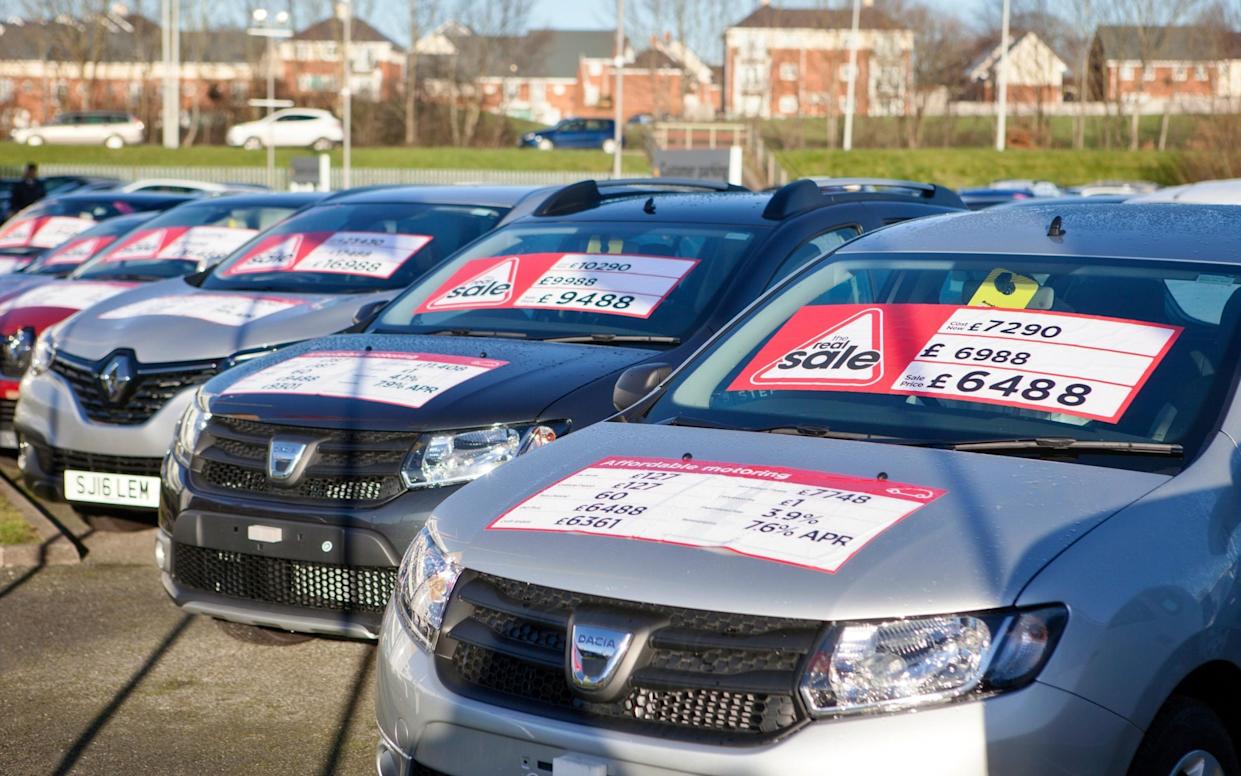
Comments